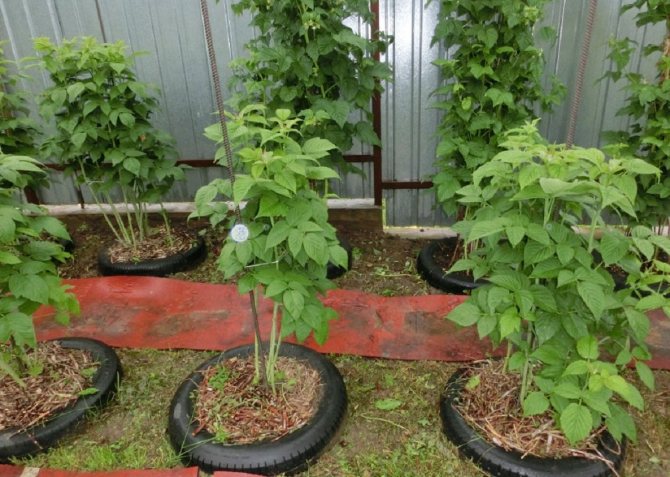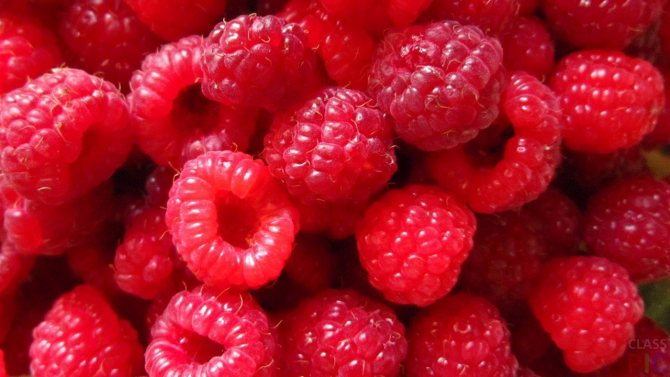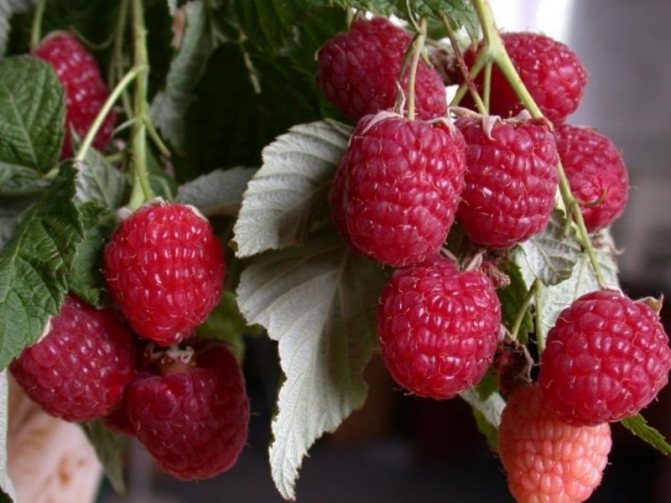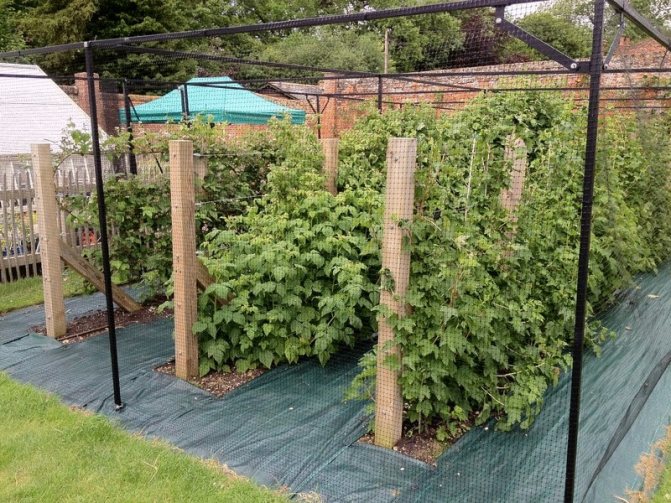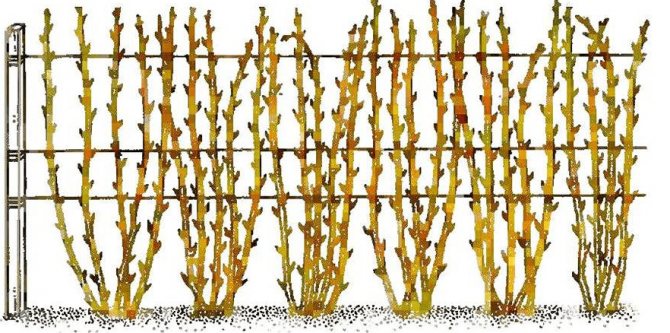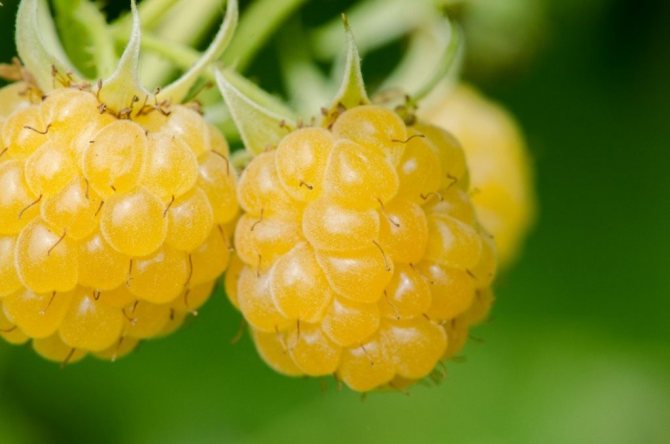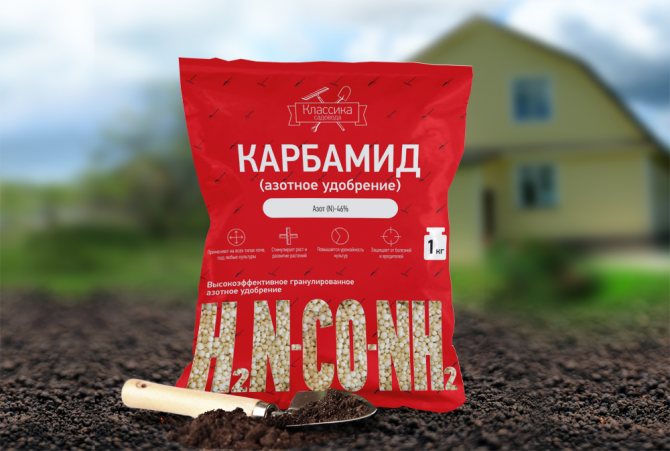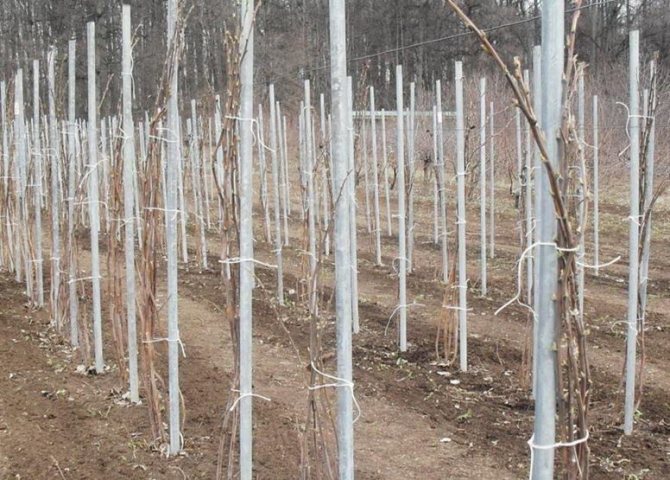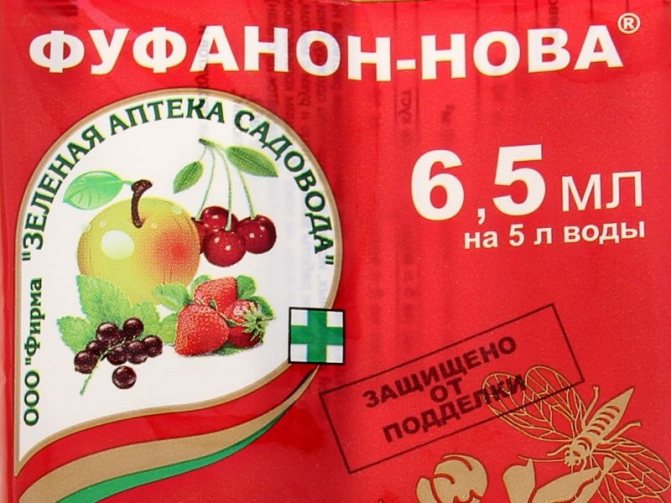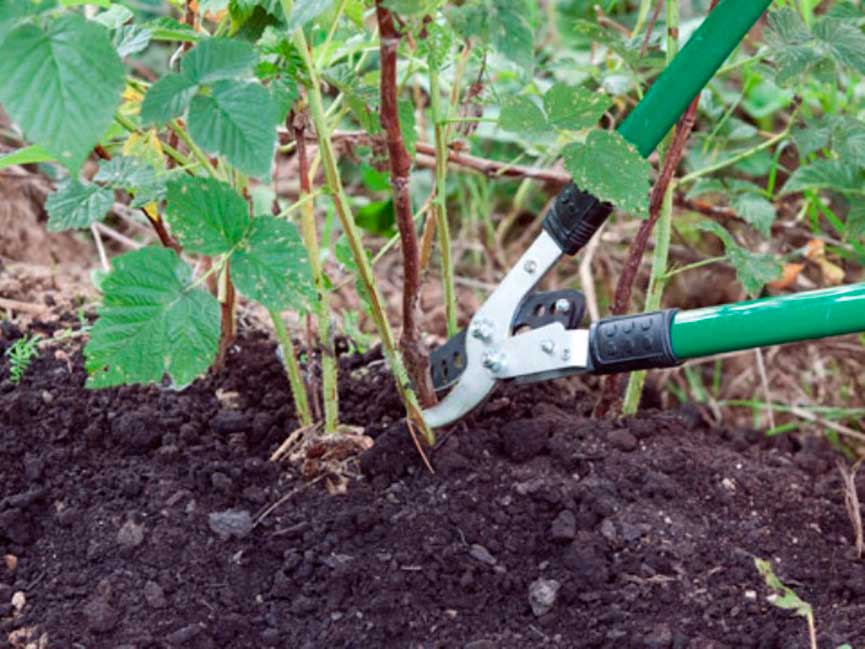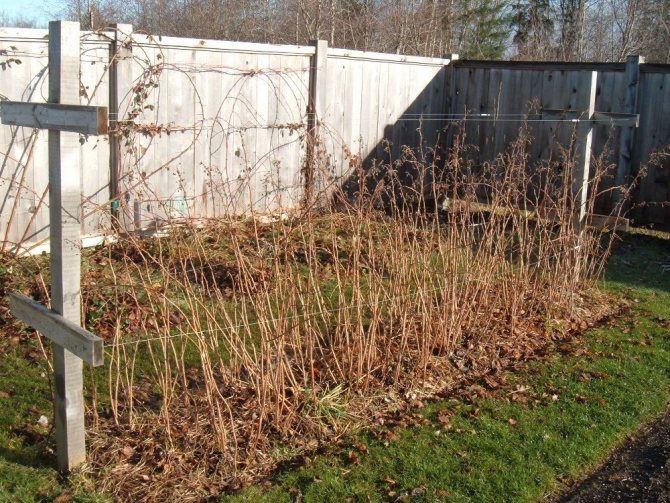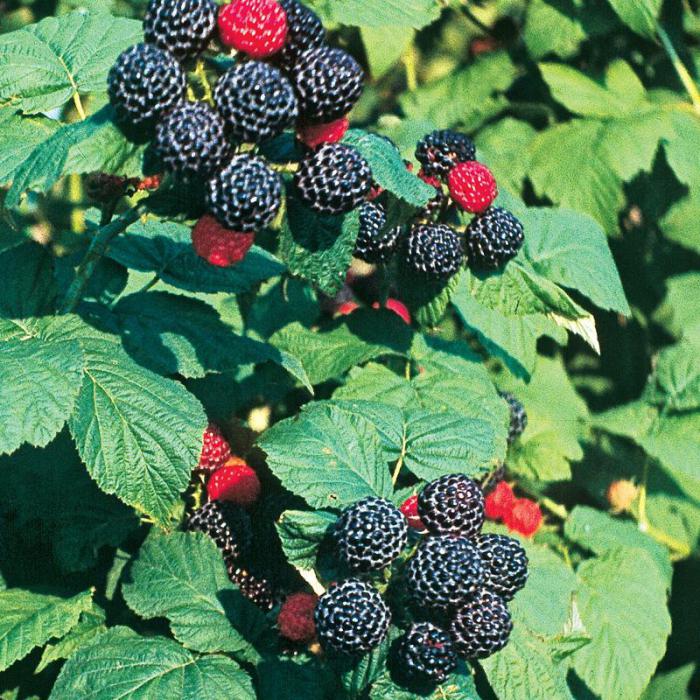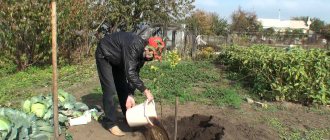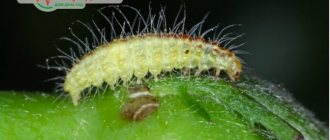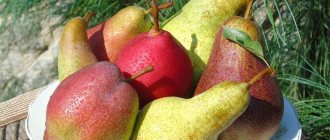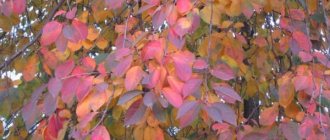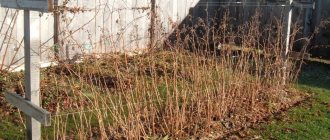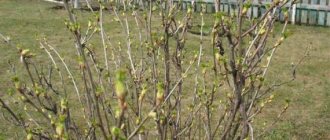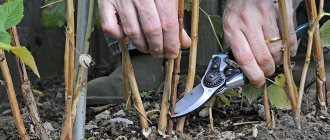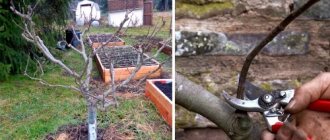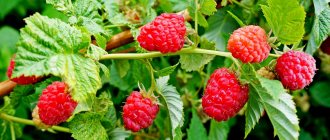No one will give up raspberries at their summer cottage. It is not difficult to buy and plant raspberries - but they will grow in one place for several years, so this place should be chosen and equipped carefully. What plants should not be planted next to raspberries? What fertilizers should be applied when planting? We share information for which now, in August, is the right time.
Rules for feeding raspberries with mineral fertilizers, organic matter, ash, bark, yeast
Raspberries are the most popular berry crop grown by almost all gardeners. However, in order to get the largest yields of this berry shrub, it is not enough to choose a suitable site, plant the bushes correctly, water and loosen the soil. Timely fertilization for this berry is indispensable.
What nutrients and at what time should be applied throughout the summer season, will be discussed below.
The content of the article:
1. How to determine what is missing in raspberries 2. How much seasonal feeding is required for regular and remontant varieties of raspberries 2.1. Top dressing in the spring 2.2. Top dressing of raspberries in summer during flowering and fruiting 2.3. Top dressing of raspberries in autumn 3. What mineral fertilizers to feed raspberries. 3.1. Nitrogen-containing fertilizers 3.2. Double superphosphate 3.3. Potassium fertilizer 4. Organic fertilizers for raspberries 5. Top dressing of raspberries with folk remedies: bark, green leaves, ash, yeast, cleaning 6. Foliar dressing
Pest control
In the spring, not only plants wake up, but also many pests that infect them. Before flowering, even before the bushes wake up, they should be treated with Bordeaux liquid 3%. All trash must be removed and burned.
During flowering, raspberries cannot be treated with chemicals, especially this is useless against the raspberry beetle, since it still hides in the ovaries. Spring care for raspberries involves the use of biological products, diluting them strictly according to the instructions.
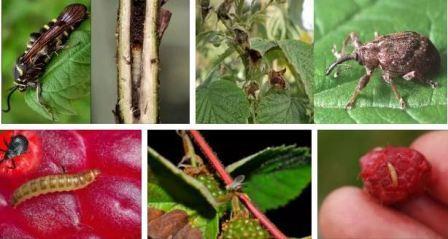
How to determine what is missing in raspberries
A knowledgeable gardener will always determine by the appearance of the raspberry tree, which macro and microelements are lacking in the raspberry bush, or what is in excess in the soil:
- foliage becomes dark emerald and glossy, and subsequently acquires a purple color with a burgundy tint - raspberries lack phosphorus;
- the leaves turned yellow sharply, and the veins remained bright green - there is a lack of iron in the soil;
- leaf plates begin to turn yellow from the center to the edges - plants lack magnesium;
- the leaves remain small, do not grow, turn yellow - the raspberry bush lacks nitrogen fertilizers;
- the veins turn yellow, and later turn white in the midst of the summer period - raspberries lack sulfur. If you do not apply top dressing on time, the bushes will begin to shed their leaves, and in the future they may die;
- a brown color appears along the edge of the leaves - there is a deficiency of potassium in the soil;
- leaves become dark emerald saturated color, too many new shoots are formed - too much nitrogen fertilizers have been applied to the soil.
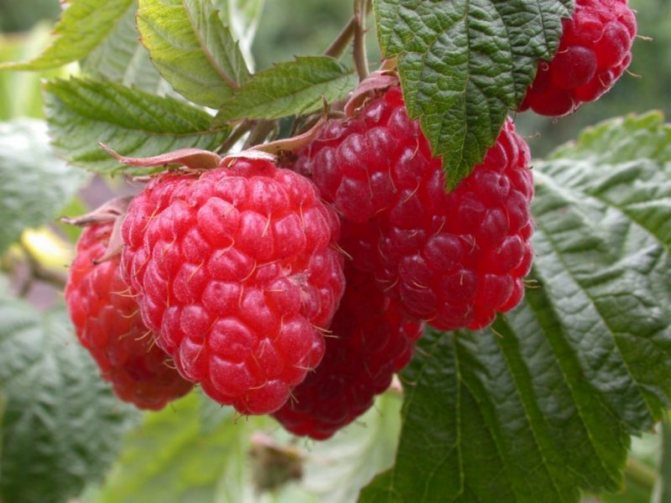

Having precisely determined what elements are missing in raspberries, you can quickly fix the situation.
When does the early berry ripen?
Early ripe raspberry varieties cannot boast of high yields. The ripening varieties later bear much more fruit.But its value lies in the fact that it is one of the first berries of the season.
In the southern regions of the country, raspberries ripen in late May or early June. In the more northern parts, the fruiting period is postponed to mid-June and lasts the whole month. Also, very early types of raspberries are distinguished, which bear fruit from the second half of May to mid-June.
These include:
- Alba;
- Delhi;
- Anita.
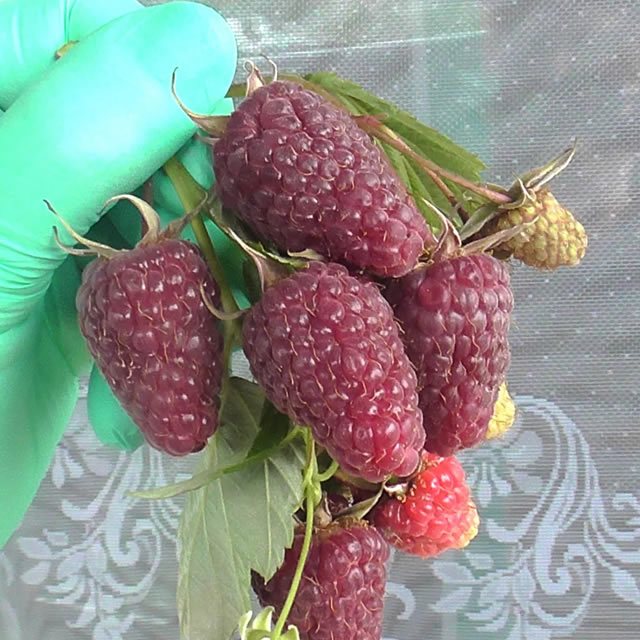

Important! For gardeners of the northern regions, it is better to choose ultra-early varieties of remontant raspberries so that the second crop does not die during frosts.
How many seasonal feedings are required for regular and remontant varieties of raspberries
It is imperative to feed the raspberry tree twice in the spring-summer season.
Terms of feeding raspberries:
- in the last decade of April, during the period of bud swelling or in the first decade of May, when leaves begin to appear;
- in the last decade of August, when the crop is harvested, or in mid-September in the process of preparing the raspberry for winter.
It is also recommended to apply fertilizers under raspberries during the summer and autumn during the formation of ovaries and ripening of fruits, and after fruiting - in order to replenish the nutrients spent in the plants.
But remontant varieties of raspberries require more frequent application of nutrients to the soil, since they bear fruit almost continuously throughout the summer.
Remaining raspberry variety
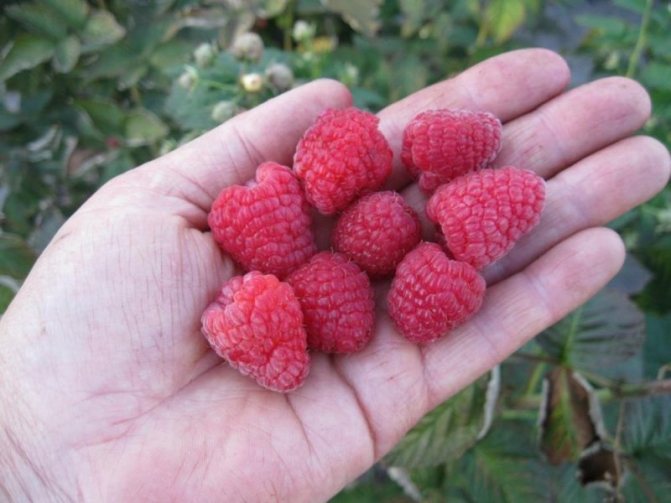

Top dressing of remontant raspberry varieties is carried out according to the following schedule:
- before the snow has melted, fertilizers are applied under the bushes of such raspberries for the first time (in the last decade of March or in early April);
- during the period of foliage, feeding is repeated;
- during the period of active ripening of fruits, you still need to feed the remontant raspberry tree;
- the last time fertilizers for such a variety of raspberry bushes are applied in the fall in the process of preparing them for the onset of winter.
![Tinkoff (Debit Card) [CPS] RU](https://bgn.imadeself.com/wp-content/uploads/tinkoff-debetovaya-karta-cps-ru11.jpg)
![Tinkoff (Debit Card) [CPS] RU](https://bgn.imadeself.com/wp-content/uploads/tinkoff-debetovaya-karta-cps-ru11.jpg)
In spring and early summer, fertilizing containing nitrogen is most effective - they contribute to the rapid growth of vegetative mass and the massive appearance of ovaries.
CHOOSE RASPBERRY!
• Raspberry tree Fairy tale • Raspberry Indian Summer • Raspberry remontant Diamond
Top dressing of raspberries in the spring
The most effective top dressing applied under raspberry bushes in the spring. For remontant varieties, fertilizers are applied for the first time when the snow has not yet completely melted - in early April.
Around the bushes, it is necessary to make trenches into which to pour a solution of cow manure diluted with water (one part of the manure should have 5 parts of water). Instead of mullein, you can take chicken droppings, but it must be diluted in a ratio of 1:10. And also organic fertilizers can be replaced with ammonium nitrate or ash.
Top dressing of raspberries in spring - video
Important!
You cannot spread fertilizers on the snow cover - when it starts to melt, most of the fertilizers will "float away" along with the melt water.
The next feeding of remontant raspberries is carried out when young foliage appears on it.
As a top dressing they use:
- ammonium sulfate granules. The rate for each bush is 15 g;
- or Kemir (2 tablespoons per 6 liters of water).
Common raspberry varieties are fertilized for the first time in the last decade of April or in the first decade of May,
after the snow cover has melted, and the soil dries out a little. The soil is loosened, and only then top dressing is made from mineral or organic fertilizers.
For spring feeding of raspberries during the first 2 years after planting, you should use per 1 m2: 15 g of urea and about 8 kg of humus.
And in subsequent years, the composition of the fertilizers applied for raspberries should be changed.
THE BEST VARIETIES OF STRAWBERRY!
• Strawberry Darenka • Strawberry Vicoda • Strawberry Garland
Can be used:
- Chicken droppings diluted with water in proportions of 1:20 and infused for a week.
- Superphosphate, according to package instructions.
- Wood ash (or potash salt).
- Ammonium sulfate (15 for each bush).
- Urea or ammonium nitrate (containing nitrogen for active plant growth).
- Peat is very useful for fertilizing raspberries; it contains a large amount of nutrients.
Top dressing of raspberries in summer during flowering and fruiting
In the last decade of May - the first decade of June, this berry shrub begins to bloom and at the moment it also requires nutrients in large quantities. During this period, fertilizers are applied in shallow trenches that are dug around the bushes.
The nutrient solution for feeding raspberries in summer during flowering should consist of: wood ash (4 tbsp. L.), 1 tbsp. urea and 1 tbsp. superphosphate. All of these components are diluted in a bucket of water.
What raspberries need during flowering - video
In the first decade of June, when ovaries begin to form on the shoots, the following fertilizers can be applied under raspberries:
- "Under the root" a solution of slurry is added, diluted with water in a ratio of 1:10 or bird droppings (a pound of fertilizer per bucket of water), having previously infused the composition in a warm place for about a week;
- instead of organic matter, mineral fertilizers can be applied under this shrub. For effective feeding of raspberries, the following composition is suitable: dissolve 1 tbsp in a bucket of water. l. ammonium nitrate, 2 tbsp. l. superphosphate, 1 tbsp. l. potassium salt.
During the fruiting period, it can be used for application to the soil and complex fertilizers (Ideal and similar)
... Such drugs are diluted in the proportion: for 10 liters of water 3 tbsp. l. If you add potassium magnesium to such a solution, then this dressing will be ideal for remontant raspberries during the period of active ripening of berries. Complex fertilization of raspberries allows you to immediately add to the soil all the substances necessary for the formation of ovaries and subsequent fruiting.
Important!
Nitrogen fertilizers can acidify the soil, therefore, to deoxidize the soil, one glass of ash can be added under each raspberry bush.
In the second decade of August, after harvesting the fruits, you can apply Kristalon or another complex mineral fertilizer under the bushes of this berry culture. It is also recommended to plant siderates - mustard or rye - in the aisles of the raspberry, which can be plowed about a month after germination.
Top dressing raspberries in the fall
Fertilizing under the raspberry tree in the autumn will serve its best fruiting in the next season. First, the stems that have matured are cut off, the excess growth coming from the roots is removed. Then, all plant debris and roots are removed from the soil surface, and the soil is dug up. The raspberries are well watered, then the last top dressing of the season is made. Once every few years, it is recommended to apply a mixture of manure (up to 4 kg per square) and ash (1/2 glass for each bush) under the bushes.
Top dressing raspberries in the fall - video
You can also apply the following fertilizers in the fall for each square of the raspberry tree:
- 50 g of granular superphosphate mixed with 30 g of potassium sulfate;
- 50 g of granular superphosphate combined with 40 g of potassium sulfate;
- 40 g of superphosphate and 100 g of ash, which are dissolved in a bucket of water.
This is the scheme for feeding raspberries in the autumn.
After fertilization, the plants are well watered and covered with a thick layer of high-moor peat on top to protect the raspberry root system from freezing in winter cold.
Watering
Raspberries, although they do not like waterlogging, are extremely demanding on the timely supply of moisture. She especially suffers without water when it blooms. This period often coincides with reduced rainfall and dry winds.
If the plantings are not provided with sufficient watering in time, then spring care for raspberries will be incomplete, there will be few ovaries, some flowers may die and dry out, and the harvest will be three times less than usual - from small berries.
More on the topic: Raspberries - how to properly care for and what benefits can it bring?
It is better to water in the morning, 1-2 times a week, depending on the weather, spilling the soil 10-20 cm, that is, to wet the root system. This requires 1-2 buckets per 1 sq. m. Drip irrigation is less time consuming, but just as effective.
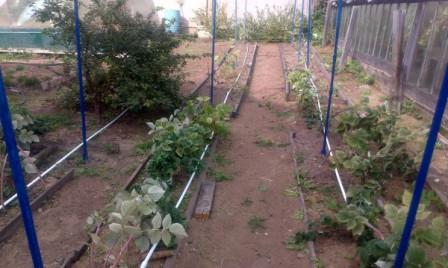

What mineral fertilizers to feed raspberries
The minerals that raspberries need in summer are potassium and nitrogen,
the need for phosphorus in this shrub is somewhat less. If, when preparing a place for this berry crop, the required amount of fertilizer was added to the soil, then in the next few seasons you can feed these bushes only with nitrogen fertilizers.
In light soils, the amount of fertilizer applied should be increased by about 1/3 of the indicated dosages, since potassium quickly, along with water, goes into the lower layers of the soil. Phosphorus is found in the soil in complex compounds, so it is poorly absorbed by the raspberry root system. Therefore, mineral fertilizing is often combined with the introduction of organic matter.
Nitrogen fertilizers for raspberries
Fertilizers, which include nitrogen, are especially necessary for raspberries in spring and early summer, when new shoots and vegetative mass are formed. This macronutrient strengthens the roots of this berry crop, promotes abundant and long flowering.
Nitrogen fertilizers - video
Nitrogen contributes to an increase in the acidity of the soil, therefore, wood ash is added simultaneously with its introduction into the soil.
Such fertilizers should be applied for crops only before the end of flowering, then nitrogen begins to have a negative effect on raspberry plants.
The most effective nitrogen-containing fertilizer is urea or carbamide
, which can be applied to the soil in dry form, as well as in the form of a solution. For feeding raspberries, urea is used in proportions: 20 g of the drug is dissolved in 10 liters of water.
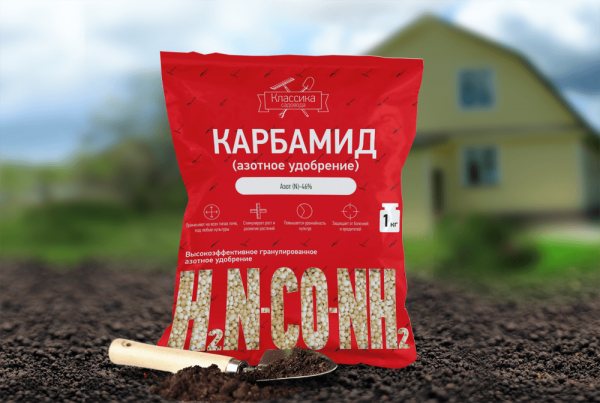

Carbamide is used for foliar dressing of raspberries "on the sheet", as it is less traumatic for foliage. Dissolve 30 g of carbamide in 10 liters of water and spray raspberry shoots early in the morning or late in the evening.
Photo of damaged raspberry bushes due to the abuse of nitrogen fertilizers with a high concentration
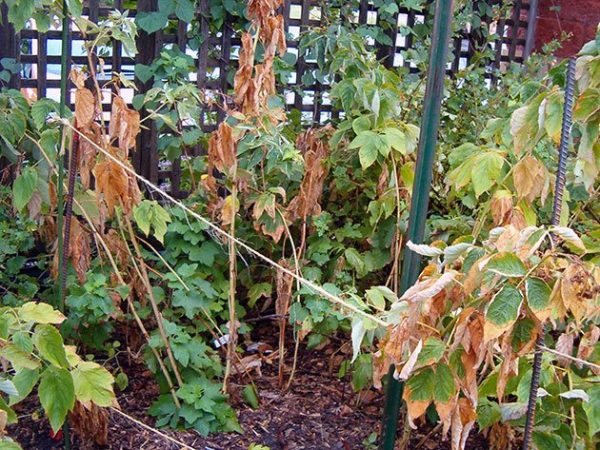

Double superphosphate for feeding raspberries
Another fertilizer that increases yields, accelerates shoot growth, and increases disease resistance is double superphosphate.
This fertilizer contains nitrogen, phosphorus and a number of other useful substances. Double superphosphate is usually introduced into the soil in the form of a solution, diluting it according to the annotation. Usually it is used in the form of top dressing together with other mineral fertilizers in the following proportion: superphosphate, potassium salt and ammonium nitrate diluted in 10 liters of water in a ratio of 3: 2: 1.5.
Raspberry potassium fertilizer
Potassium fertilizers enhances the immunity of raspberries, increases disease resistance, increases resistance to cold weather. Under each bush, you need to add 40 g of potassium salt, which is embedded in the soil along the entire near-trunk circle.
Tools for quick harvesting
For the industrial harvesting of raspberry multiflora, special harvesters are used, they work on the principle of shaking the bushes, thanks to rotating mechanisms on which thin rods are attached. A machine from both sides of a row of raspberry bushes crushes the fruit onto a conveyor. For such combines, bushes are planted at a distance of 2-2.5 m and fixed on horizontal trellises. To work, you need 3 people, 2 assemblers and 1 driver.
This way saves collection time and labor costs. The only drawback of raspberry harvesting combines is their high cost.
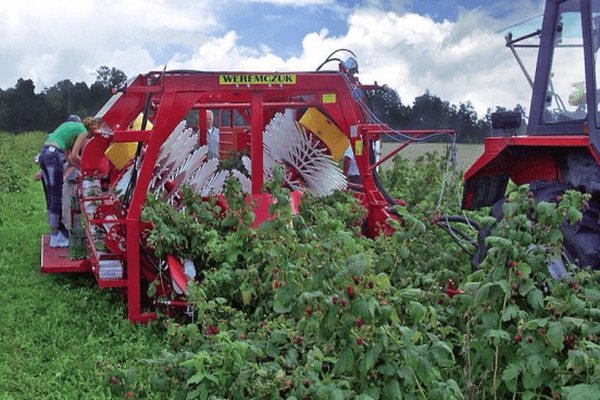

Popular models for picking raspberries:
- Oxbo 9120;
- Korvan;
- Natalka;
- Joanna.
For picking berries in ordinary garden plots, home-made devices or hand-picking combines like a rake with a box are used. The processing of bushes with a handheld harvester occurs due to the grasping of the bushes with a rake, and light shaking movements knock the berries into a special box.
The ripening dates of raspberries in Russia can vary, especially in the middle lane and in the northern regions due to a sharp change in weather conditions. It is important to choose the right variety and high-quality seedlings for the region in order to get harvest in large volumes and on time.
Organic fertilizer for raspberries
In addition to mineral fertilizers, many gardeners are actively using organic matter to feed their raspberries. The main such substances are humus, manure, bird droppings.
Humus and manure
Fresh cow dung is usually not applied to this berry crop, as it can burn the delicate roots of raspberries. But you can make circular trenches around the bushes of this plant and pour into them a solution of slurry diluted with water in a ratio of 1: 5. Fresh organic matter should always be infused for several days before applying under the bushes.
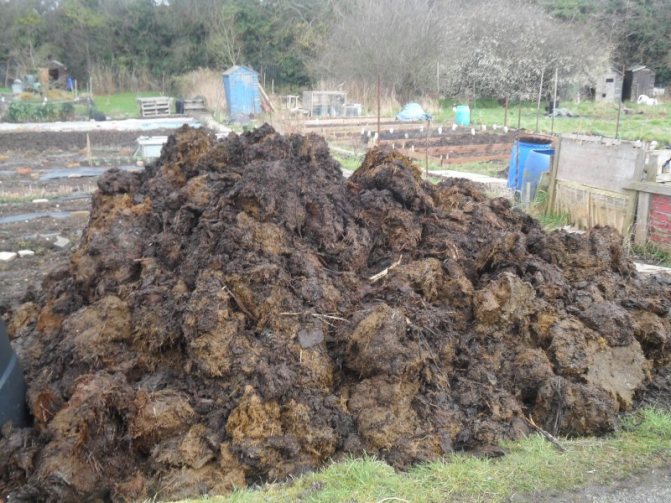

Humus is rotted manure, it contains a large amount of nitrogen in an easily assimilable form, therefore it is actively used for adding raspberries to the trunks of raspberries in spring and autumn.
Chicken droppings
Chicken manure is a concentrated organic fertilizer, therefore, in its pure form, it is usually not applied to the soil. It is infused with water in a ratio of 1: 10 for 4-5 days. Under raspberries, such an infusion is applied immediately after watering, and it must first be diluted once again in water - for 10 liters of water, 0.5 liters of infusion.
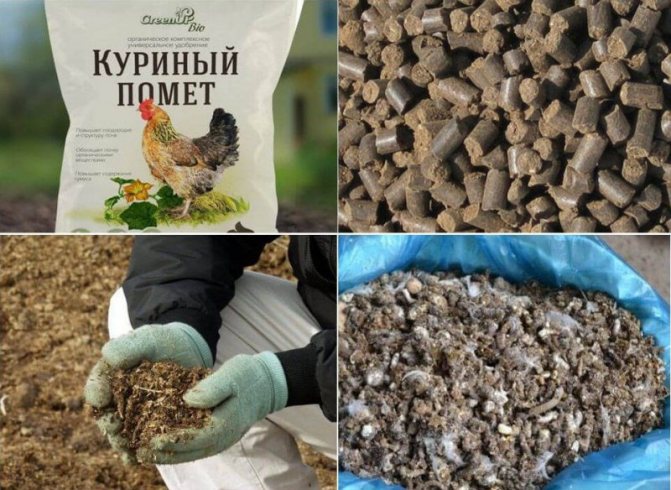

Autumn care
This period is characterized by the end of fruiting of remontant raspberries and the preparation of berries for winter. In the fall season, gardening work can also be distributed by month.
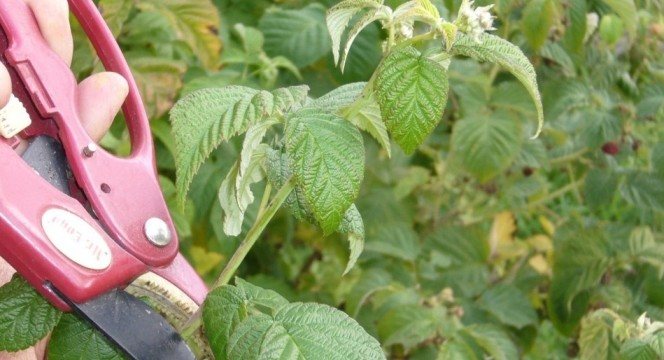

Autumn pruning
September
The harvesting of berries continues. It is advisable to immediately remove fallen fruits from under the bushes, as they attract insects to themselves.
On a note. Foliage is collected near the raspberry and burned. If in the second half of summer the spawning stems were not cut off, this can be done in this month.
Carrying out the next loosening of the soil, phosphate-potassium fertilizer is applied under the berry fields. Such top dressing will allow depleted fruiting plants to calmly endure winter frosts.
October
There are fewer and fewer good days, so summer residents are trying to keep up with the main work in the garden:
- harvested cuttings for propagation are sent to the cellar for storage;
- new seedlings are planted in a permanent place, not forgetting to disinfect the roots in copper sulfate;
- the soil around the plants is dug up, but shallow, so as not to catch the roots of raspberries;
- root shoots are removed;
- spread fresh mulch under the plants.
If it becomes necessary to remove old bushes, then October is the most suitable month for this.
In the middle of autumn, the last pruning of raspberries is carried out. The remaining shoots are prepared for winter.
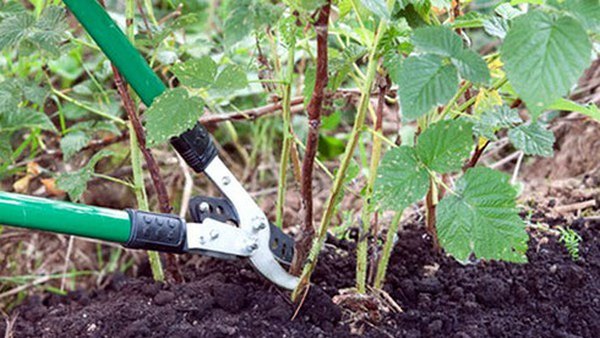

Removing old raspberry bushes
November
Newbie summer residents in this period already forget about gardening troubles, although at this time they still have a lot of work:
- the root area of varieties that do not tolerate frost is covered with organic matter: sawdust, straw, leaves, compost, peat (if this was not done in October);
- mice can get into the area and spoil the remaining shoots, therefore it is recommended to spread the poison for rodents around the raspberries;
- if the snow has already fallen, it is scooped up to the bushes; it is especially important to cover young plants with such a “blanket”.
In colder regions (like the Urals and Siberia), as well as in areas with little snowy winters, the berry is additionally covered with spruce branches, spandbod or burlap.
Growing raspberries is a painstaking work that allows you to significantly increase the fertility of plants.With poor agricultural technology, the berry growers get sick and give few fruits that lose their taste.
Feeding raspberries with folk remedies
In addition to organic and mineral fertilizers for feeding raspberries, you can use folk recipes for feeding, which many gardeners prepare from improvised means, but the effectiveness of such funds is not lower than complex mineral fertilizers. The most famous fertilizers according to folk recipes will be described below.
Greenfinch
This fertilizer is the most affordable, easy to prepare and effective. A couple of kilograms of poultry droppings are placed in a large barrel, 2/3 clogged with collected weeds and top up with water. To speed up the fermentation process, you can add sugar or fermented jam to this mixture. Such green tea is infused for 4-5 days.
For application under raspberries, the infusion of greenfinch is diluted with water in a ratio of 1:10, a liter of such fertilizer is applied under each shrub.
Ash fertilization
Wood ash is one of the best folk fertilizers for all "inhabitants" of the garden and vegetable garden, most of all, such a top dressing contains potassium. Usually, the following solution is prepared: nitrogen fertilizers and a glass of ash are dissolved in a bucket of water. Top dressing with ash is applied under raspberries during the summer season, thereby improving the flowering of bushes, their resistance to diseases. In the autumn, wood ash, together with mineral fertilizers, is embedded in the raspberry tree trunks.
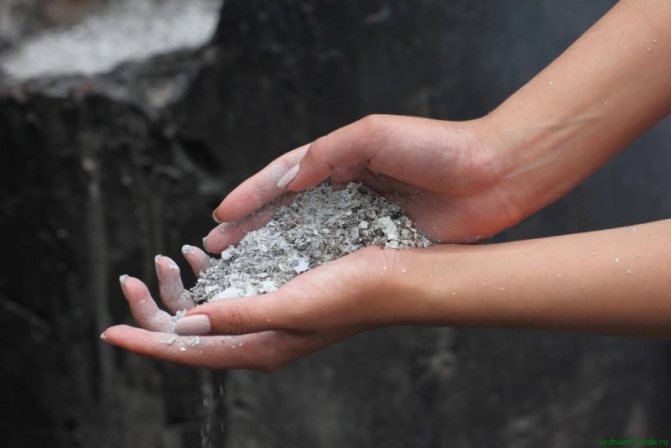

Potato peelings
Potato peels can also be used as organic fertilizer for raspberry bushes.
They can be applied as follows:
- add to compost heaps;
- dry cleanings are placed on the bottom of the planting holes when raspberry seedlings are planted;
- used as mulch.
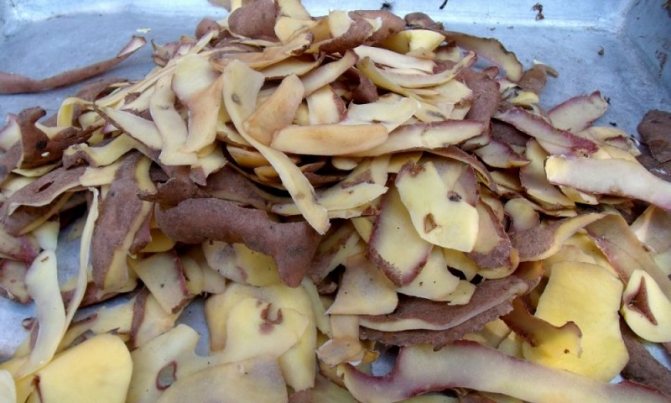

Yeast feed for raspberries
Yeast is also often used to feed raspberries.
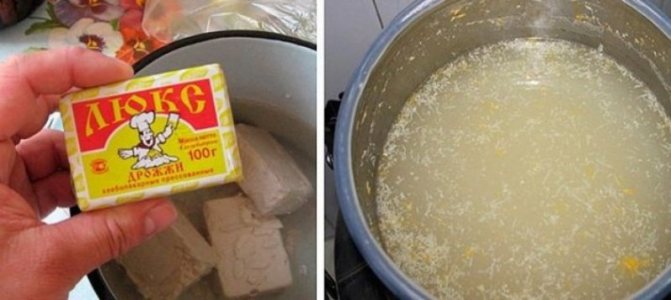

To do this, you can use the following recipe:
- dry yeast (0.5 kg) and the same amount of sugar are diluted in warm water (in 10 liters);
- the resulting infusion is diluted with water in a ratio of 1: 5;
- the whole yeast solution is used immediately after preparation.
Bark
Peeling tree bark, rotten twigs and sticks are another effective and cheap fertilizer for raspberry bushes. In autumn, crushed tree bark, broken sticks and branches are laid out in the trunk circles, such a layer of mulch, when rotted, will be a source of mineral elements and other valuable substances.
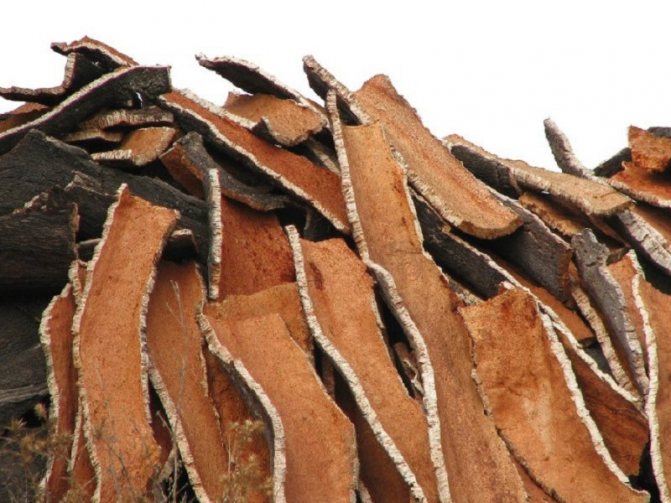

When to treat raspberries from diseases and pests
Prevention of fungal diseases: didimella (purple spot), anthracnose and septoria (white spot) is reduced to growing raspberries in ventilated, sparse plantings, without waterlogging the soil, excessive application of nitrogen fertilizers and weeds. Bordeaux liquid, HOM and Topaz help in the fight against them. It is advisable to finish processing with chemical preparations at least 30 days before the raspberry harvest!
Pests - raspberry fly, raspberry beetle, gall midge, raspberry mite, spider mite, various caterpillars, aphids - are fought with the help of special preparations (Akarin, Kinmiks, Biotlin, Kleschevit, Senpai) and folk methods (infusions of garlic, onion husks) ... If raspberry shoots are damaged, they are removed: heavily affected shoots must be cut out entirely, slightly affected tops must be cut off. Cut off shoots, fallen leaves and mummified berries must be burned!
During the flowering of the emerging beetles early in the morning, you can shake them off on the litter (preferably on an oilcloth, dark is preferable, pests are clearly visible on it) and destroy. The larvae spend the winter in the ground, so the entire "crop" must be collected, and in such a container, from which they cannot get out.
Read more: Raspberry-strawberry weevil
Foliar dressing for raspberries
Foliar top dressing of this berry shrub is usually carried out in cases where the plant needs urgent nutrients.
If the vegetative mass of the shoots does not look good, the ovaries are formed poorly, you can carry out foliar feeding of raspberries with the following composition:
- a bucket of water;
- copper sulfate - 2 g;
- boric acid - 2.5 g;
- ammonium molybdate - 3 g;
- zinc sulfate - 3 g.
With obvious signs of a shortage of specific macro and microelements, solutions should be made from the corresponding preparations, which are used to spray the raspberry foliage.
What fertilizer to choose for raspberries - every gardener decides for himself.
But you just need to remember that without top dressing, this berry bush will shrink, the fruits decrease in size, as a result, the yield may suffer.
Do not forget to carry out spring, summer and autumn feeding of raspberries in a timely manner and you will always be happy with the harvest.
Yield
Raspberries will bear fruit in any case, even if their place of deployment is in the forest. But how high the yields are, first of all, depends on the variety of the variety. The table below will show how much raspberry can be harvested from 1 weave under average agricultural conditions.
How many times in a life does a cherry bear fruit?
Yield indicators of some varieties
| Variety | Average weight of fruits, g. | Productivity, kg / weave |
| Hussar | 5 | 85 |
| Gloria | 4.5 | 90 |
| Yellow giant | 6 | 100 |
| Mollis Promise | 4 | 120 |
| Glen Ample | 4 | 150 |
| Hercules | 10 | 180 |
| Arbat | 12 | 200 |
| Maroseyka | 10 | 200 |
| Cumberland | 2 | 240 |
Important. The variety of culture plays an important role. Repaired varieties are more productive because they allow harvesting fruits twice a year. But if you transfer such raspberries to the category of one-time fruiting, you can get higher yields.
Choosing suitable varieties, take into account their ability to adapt to climatic conditions. For example, raspberries, for which the Kuban is a fertile land in all respects, will also not bear fruit abundantly, once in the Leningrad district.
For a reason, a beginner in gardening art is interested in the question of how to increase the yield of raspberries, because there are many secrets in agricultural technology that are learned with experience.
If in the process of searching for advice on the Internet the phrase "Miro raspberry" appears, it should be borne in mind that this is not a variety, and this site has nothing to do with gardening.
Preparing for winter
To prepare the raspberry tree for winter, you need to do the following in the fall:
- remove the old layer of mulch and burn it;
- dig up the earth to a depth of 10 cm;
- water and feed abundantly before winter;
- cut off dry branches, shorten young ones to 1–1.5 m, cut off absolutely all shoots at the root of remontant raspberries;
- bend the branches lower to the ground and cover with spruce branches or covering material.
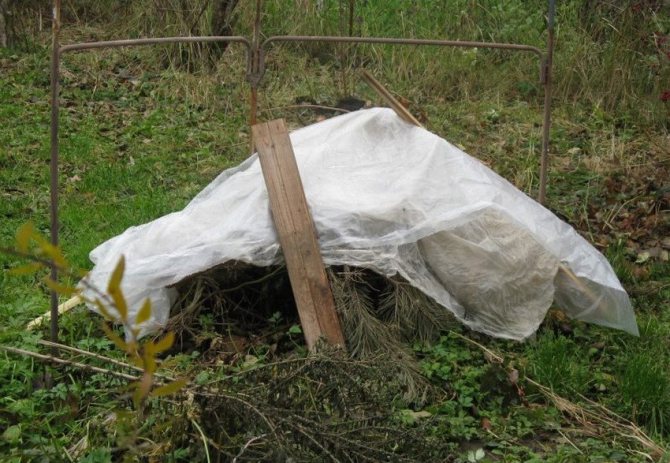

When do the mid-ripening ones ripen?
Mid-season varieties are most popular with gardeners. This group includes a huge number of varieties of raspberries. They begin to harvest from the end of June and continue to supply berries throughout July, and even the beginning of August. The peak is in mid-July. Mid-season varieties are distinguished by high yields.
Up to 6 kg of berries from a bush can give varieties:
- Hussar;
- Siberian girl;
- Youth.
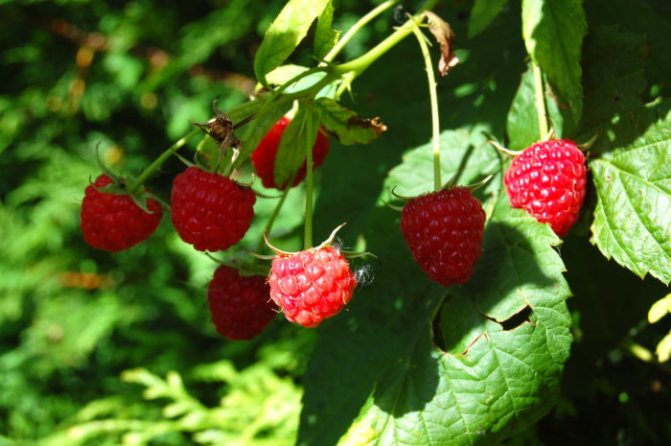

Important! Mid-season species are most suitable for making jams and juices due to the high content of dry matter in berries.
The best ways and schemes for planting seedlings
There are several ways to plant raspberry seedlings:
- bush, in which the bushes are planted in separate pits, the distance between them is 1–1.5 m;
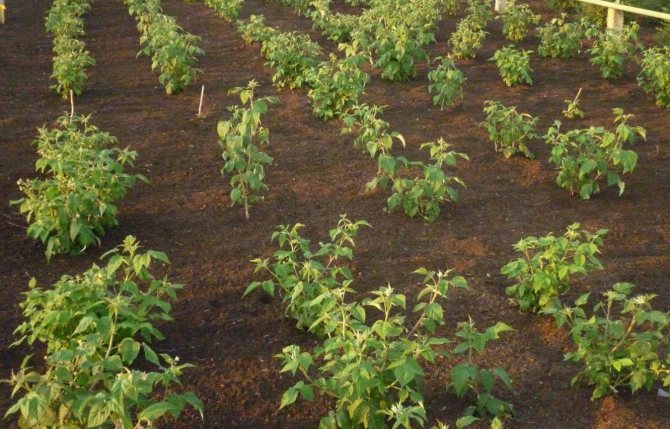

- tape, or trench: trenches are dug 35–40 cm deep and 40–50 cm wide, row spacing is 1.5–2 m, and the distance between individual bushes in the garden is 50–70 cm, suitable for large plantings;
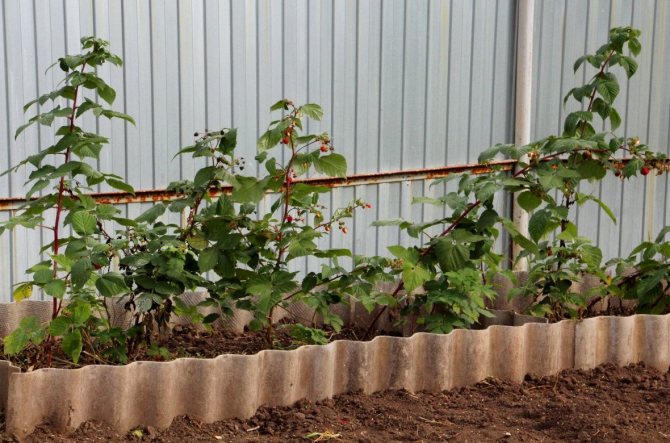

- in a container: with a lack of space on the site, raspberry seedlings are planted in boxes or pots measuring 50 × 50 cm;
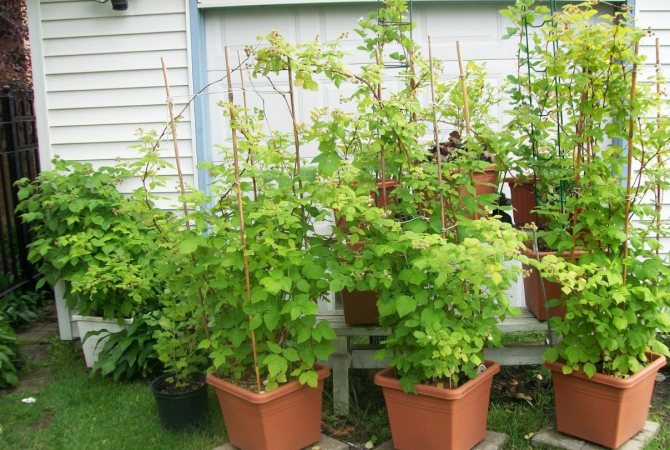

- in car tires: the tire is immersed in a hole dug for it, the inner space is covered with soil mixed with humus, where the plant is planted, the method prevents the growth of bushes.
